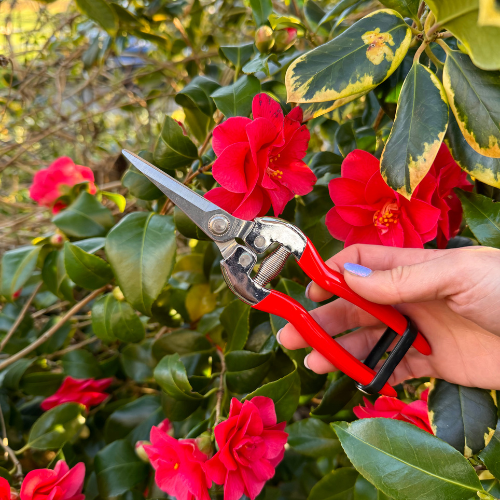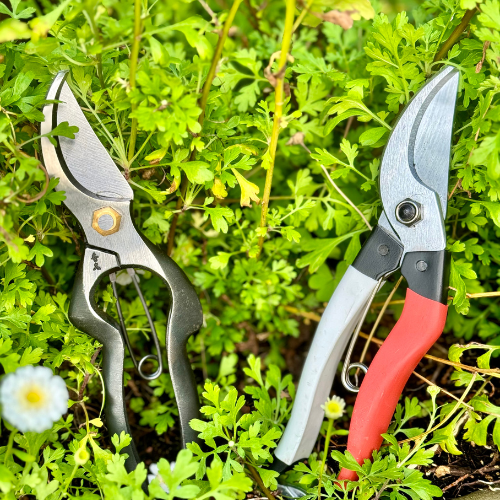Blog
The Power of Pruning: When and How to Prune Different Plants
Date Posted: 28 September 2024Pruning is essential for plant health, growth, and appearance. By removing dead, damaged, or overgrown parts of a plant, you encourage strong new growth, improve air circulation, and promote flowering or fruiting. The key to effective pruning lies in timing and technique, as different plants require specific care throughout the year.
In this blog, we’ll explore the best times and methods for pruning different types of plants and how Japeto’s high-quality tools can make the process much easier.
Why Pruning is Important
Pruning plays a vital role in plant care.
Here are some of the main reasons why it is important:
- Promotes Plant Health: Removing diseased or damaged branches helps prevent the spread of pests and infections.
- Encourages New Growth: Pruning stimulates new shoots, leading to more blooms or fruit production.
- Improves Shape and Structure: Regular pruning ensures plants maintain a healthy structure, preventing overcrowding and allowing better air and light penetration.
- Prepares for Seasonal Growth: By pruning at the right time, you set plants up for optimal growth and production in the next growing season.

When to Prune Different Plants
Timing is crucial when it comes to pruning. Here are some general guidelines for pruning various types of plants:
-
Flowering Shrubs
- Spring-Flowering Shrubs (e.g., Lilac, Forsythia): Prune after flowering to avoid cutting off next year’s buds.
- Summer-Flowering Shrubs (e.g., Hydrangeas, Buddleia): Prune in late winter or early spring, before new growth begins.
-
Deciduous Trees
Prune trees such as maples, oaks, and fruit trees during their dormant season (late winter or early spring) to minimise sap loss and give them a clean start for the growing season. -
Evergreens
Evergreen plants, including boxwoods and hollies, should be pruned in late winter to early spring. Light pruning can be done during summer for tidying. -
Fruit Trees and Vines
For fruit trees like apple and pear, pruning in late winter helps stimulate fruit production. Grapevines should also be pruned at this time to encourage strong new growth. -
Perennials
Perennials benefit from pruning to remove spent flowers and dead growth. Late autumn pruning helps clear the way for new growth in spring.

Pruning Techniques for Optimal Results
Now that you know when to prune, it’s important to use the correct techniques:
-
Sharp, Clean Tools
Using sharp and clean tools is essential to make clean cuts and prevent disease transmission. Japeto’s Heavy Duty Bypass Secateurs are designed for precision and ease of use, making them ideal for delicate pruning tasks. Their ergonomic design ensures comfort during use, while the sharp, durable blades provide clean cuts that promote healthy plant growth. -
Cut at an Angle
Always make cuts at a slight angle to prevent water from sitting on the cut surface. This reduces the risk of rot or disease setting in. -
Remove Dead or Damaged Growth First
Start by removing any dead, diseased, or damaged branches. This allows the plant to focus its energy on healthy growth. -
Thin Overcrowded Areas
Thinning dense growth helps improve air circulation and light penetration, reducing the risk of fungal diseases and promoting better plant development. -
Avoid Over-Pruning
It’s best to prune plants gradually rather than removing too much at once, as over-pruning can stress the plant and limit its growth.
How Japeto’s Tools Make Pruning Easier
Pruning requires precision, and Japeto’s expertly crafted tools are designed with this in mind. Here’s how some of Japeto’s tools can make your pruning tasks more efficient:
- Japanese Secateurs: These are perfect for precise trimming of flowers, shrubs, and smaller branches. Their ergonomic design ensures comfort and control during use.
- Heavy Duty Loppers: For larger branches, Japeto’s loppers provide the leverage and strength needed to cut through thicker stems, making the job easier and reducing strain.
- Japanese Pruning Saw: This tool is excellent for cutting through thick branches cleanly and efficiently, ensuring smooth cuts that heal quickly.
- Japeto Hori Hori Knife: This versatile tool is excellent for both pruning and digging, offering control when working around roots or cutting through tough plants.

Conclusion
Pruning is a crucial gardening practice that promotes the health and beauty of your plants. By understanding when and how to prune various types of plants, you can help them thrive year-round.
Whether you’re maintaining flowering shrubs, trees, or perennials, using the right tools will make all the difference. Japeto’s range of precision gardening tools ensures that every cut is clean, efficient, and promotes healthy growth. Invest in quality tools for a better pruning experience and a flourishing garden.
